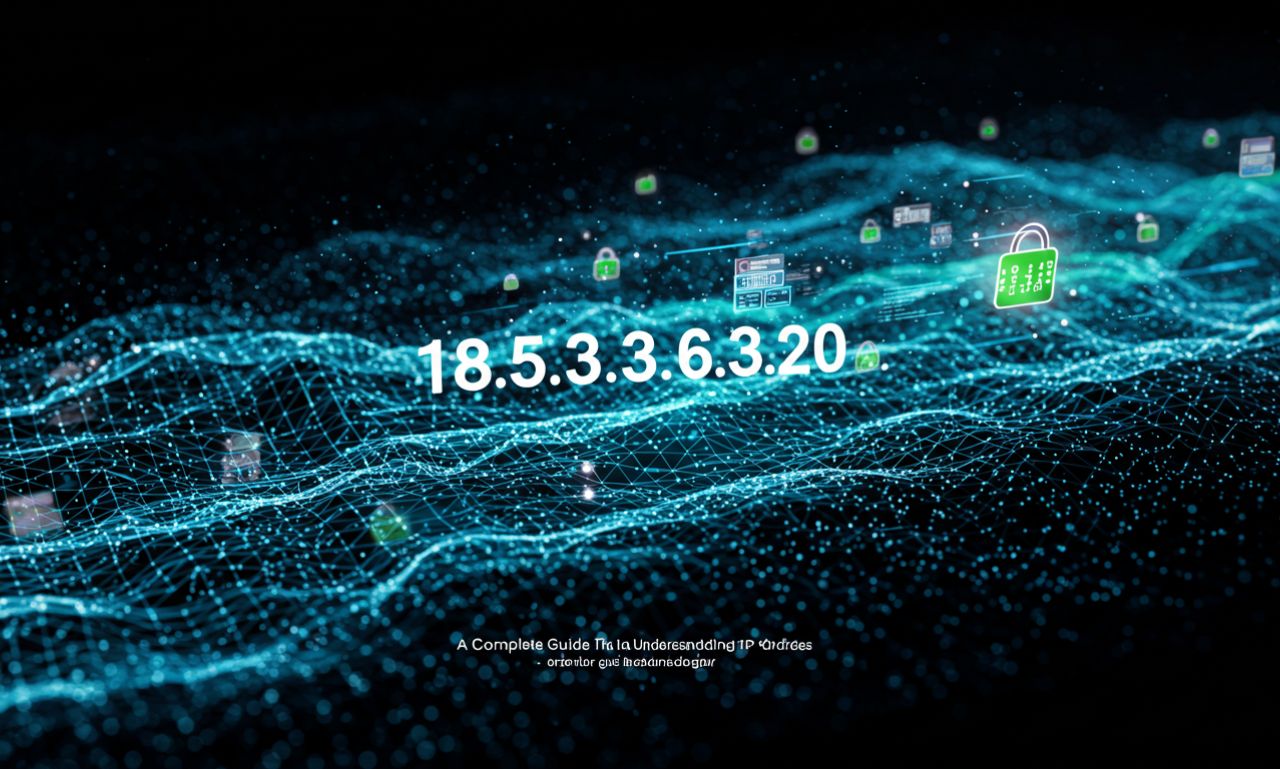The string 185.63.263.20 looks like a standard IP address, but it actually represents much more than a series of numbers. It draws attention to the importance of understanding how IP addresses work, why they matter for digital safety, and how ordinary users can benefit from knowing how to trace or interpret them.
In this guide, we’ll break down what an IP like 185.63.263.20 means, the basics of IP addressing, how to check suspicious traffic, and why learning about IPs is becoming increasingly vital in our hyperconnected world.
185.63.263.20 and the Basics of IP Addressing
An IP address, short for Internet Protocol address, is a unique identifier assigned to every device that connects to the Internet. Computers, smartphones, routers, and even smart appliances depend on IPs to exchange data.
There are two main standards:
-
IPv4: The classic system that uses four numbers separated by dots (e.g., 185.63.263.20). Each number, called an octet, can range from 0 to 255.
-
IPv6: A newer system that uses alphanumeric strings to accommodate the enormous growth of internet devices.
While 185.63.263.20 looks like an IPv4 address, it is not technically valid because “263” exceeds the maximum value of 255. However, it serves as a useful example to discuss how IPs work.
Why People Search for 185.63.263.20
There are several reasons someone might come across or search for an IP like 185.63.263.20:
-
Network logs – IT administrators often see unfamiliar IPs in traffic logs and want to investigate.
-
Security checks – Users may be verifying if an IP is legitimate or suspicious.
-
Geolocation curiosity – People sometimes track IPs to learn where online activity originates.
-
Troubleshooting – Invalid or strange IPs can signal misconfigurations in devices or servers.
Even though this particular address isn’t valid, the practice of investigating IPs is very real and important.
185.63.263.20 and Digital Security
Security is one of the biggest concerns with IP addresses. Cybercriminals often mask attacks behind IPs, and unusual addresses like 185.63.263.20 may raise red flags.
Key considerations include:
-
Spoofing: Hackers sometimes disguise activity behind fake IPs.
-
Blacklisted IPs: Certain IPs get flagged for sending spam or malicious traffic.
-
Suspicious activity: Unknown IPs accessing your network could signal intrusion attempts.
Whenever you encounter an unfamiliar IP, always confirm it through verification tools.
How to Check 185.63.263.20 or Similar IPs
Several tools exist to check IP addresses:
-
WHOIS Lookup: Provides registration details of the IP’s owner and hosting provider.
-
Geolocation services: Show the approximate region or country.
-
Blacklist databases: List IPs involved in spam or cyberattacks.
-
Traceroute tools: Map the path data takes between your device and the IP.
For an address like 185.63.263.20, these tools may confirm that it’s invalid, which is valuable in itself because it prevents confusion during troubleshooting.
185.63.263.20 and IPv4 Limitations
The address 185.63.263.20 also highlights the limitations of IPv4. Because IPv4 only allows around 4.3 billion possible addresses, the system has been strained by the massive increase in devices.
This shortage is why IPv6 was developed, offering:
-
Virtually unlimited addresses
-
Better routing efficiency
-
Built-in security enhancements
Seeing unusual IPv4 addresses like 185.63.263.20 reminds us of the transition challenges between IPv4 and IPv6.
Educational Value of 185.63.263.20
Even though it isn’t valid, 185.63.263.20 is a valuable teaching example. It demonstrates:
-
How to spot invalid formatting in IPs
-
Why careful configuration is important in networks
-
How errors in addresses can cause connectivity problems
Students, IT learners, and tech enthusiasts can use such examples to sharpen their digital literacy.
Privacy Issues Around 185.63.263.20
An IP address doesn’t just identify a device; it can also reveal private information. IPs can show:
-
Geographic location (down to the city level)
-
Internet service provider (ISP)
-
Connection type (fiber, DSL, mobile, VPN)
To protect your privacy from unwanted tracking, consider:
-
VPNs to mask your real IP
-
Firewalls to block suspicious traffic
-
Regular monitoring of network connections
Even hypothetical IPs like 185.63.263.20 remind us of how visible our online presence can be.
Why Businesses Care About Addresses Like 185.63.263.20
For companies, IP awareness is essential. Monitoring and analyzing addresses helps:
-
Detect cyberattacks early
-
Prevent unauthorized access
-
Improve network efficiency
-
Track user behavior for security compliance
By keeping an eye on both valid and invalid IPs, organizations reduce risks and maintain smoother operations.
Common Misconceptions About IPs Like 185.63.263.20
Many users misunderstand IP addresses. Common myths include:
-
“An IP reveals your exact home address.” Not true — at most, it shows your city or ISP.
-
“Every IP is permanent.” In reality, most ISPs assign dynamic IPs that change over time.
-
“Invalid IPs don’t matter.” They do, because they may signal misconfiguration or malicious attempts.
Knowing these distinctions helps everyday users approach IPs more confidently.
Future of Networking Beyond 185.63.263.20
As digital systems evolve, IP management will continue to grow more important. Future trends include:
-
Universal IPv6 adoption to handle billions of devices
-
AI-driven IP security to predict and block attacks automatically
-
More accurate geolocation for IP tracking
-
Global data protection laws are tightening controls around IP privacy
Addresses like 185.63.263.20 may be invalid, but they highlight how critical proper IP management will remain in the years ahead.
Conclusion
The example of 185.63.263.20 reminds us that even small strings of numbers can hold big lessons about how the internet works. By learning how to interpret, trace, and protect IP addresses, individuals and businesses can build safer and more efficient online experiences.
Whether it’s spotting invalid sequences, monitoring traffic, or securing private data, IP literacy is no longer optional — it’s a core skill for the digital age.

